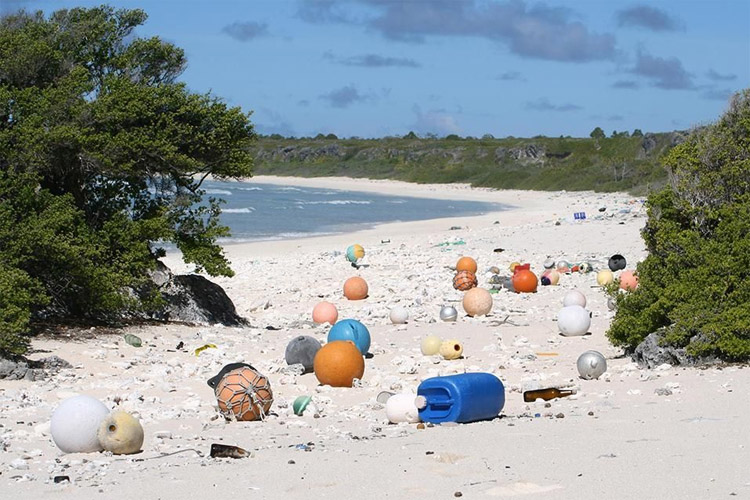A new study reveals that the small island is home to 671 plastic items per square meter, the highest density ever recorded.
The Henderson Island is a desert island located in the South Pacific. It belongs to the Pitcairn Islands, a British Overseas Territory.
Despite being named a World Heritage Site by the United Nations in 1988, the 14.4 square-mile island (37.3 square kilometers) is now considered the world capital of plastic trash.
Henderson Island is located halfway between Chile and New Zealand and is surrounded by ocean currents that deposit plastic items from all corners of the globe.
According to a new study led by the University of Tasmania, the small island is home to 37.7 million pieces of plastic. And because it is so remote and uninhabited, Henderson has been left abandoned.
"Based on our sampling at five sites, we estimated that more than 17 tons of plastic debris have been deposited on the island, with more than 3,570 new pieces of litter washing up each day on one beach alone," notes Jennifer Lavers, a researcher at the Institute for Marine and Antarctic Studies.
"It's likely that our data actually underestimates the true amount of debris on Henderson Island as we were only able to sample pieces bigger than two millimeters down to a depth of 10 centimeters, and we were unable to sample along cliffs and rocky coastline."
The scientists remind us that Henderson Island is only visited every five to 10 years for research studies and that more than 300 million tons of plastic produced worldwide each year are not recycled.
Some of this plastic stays afloat and eventually gets eaten by marine species, or reaches coastlines. Take a look at a few things you can do to reduce the use of plastics.
